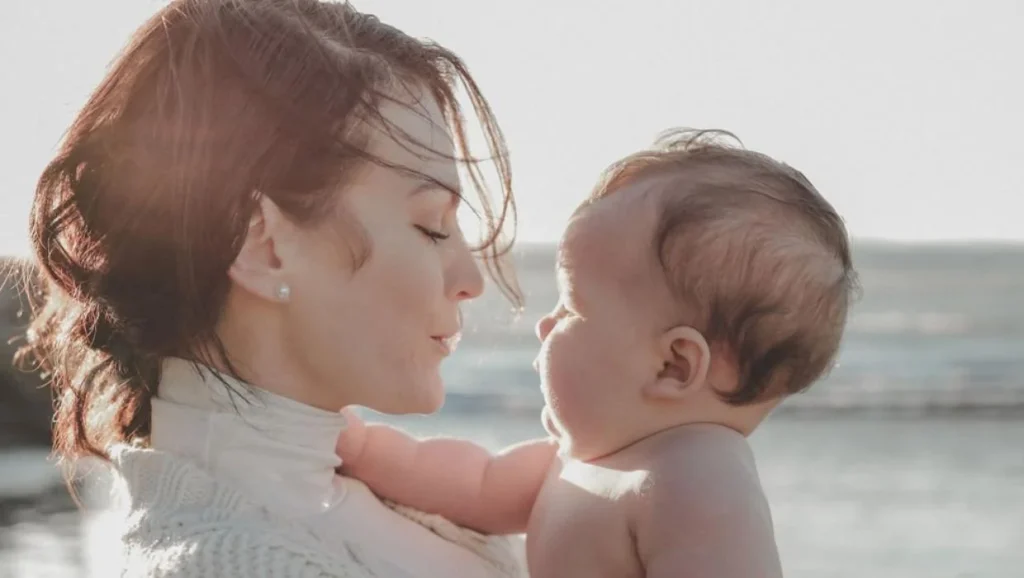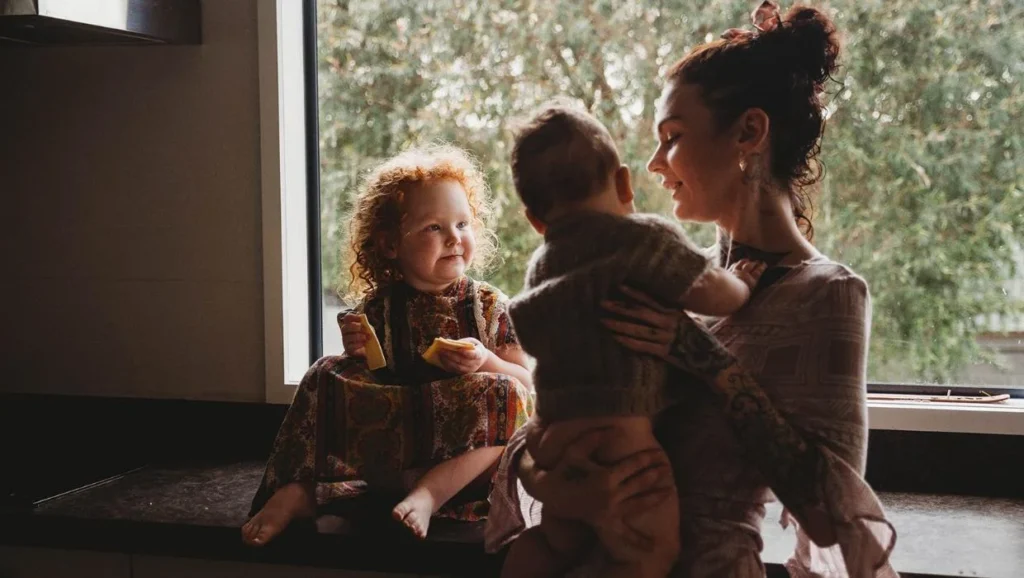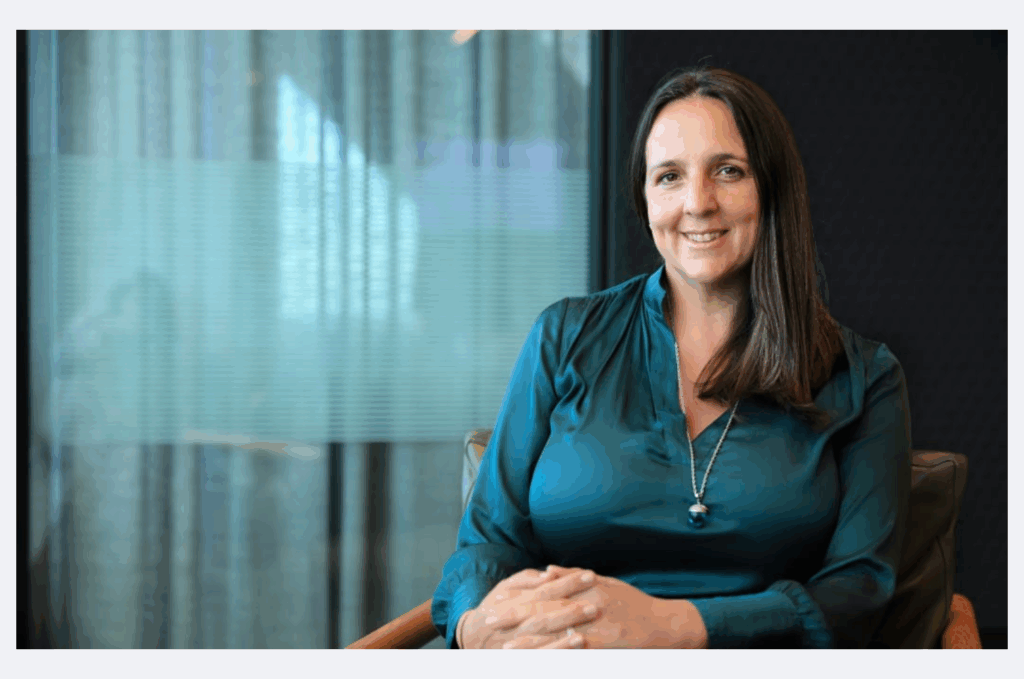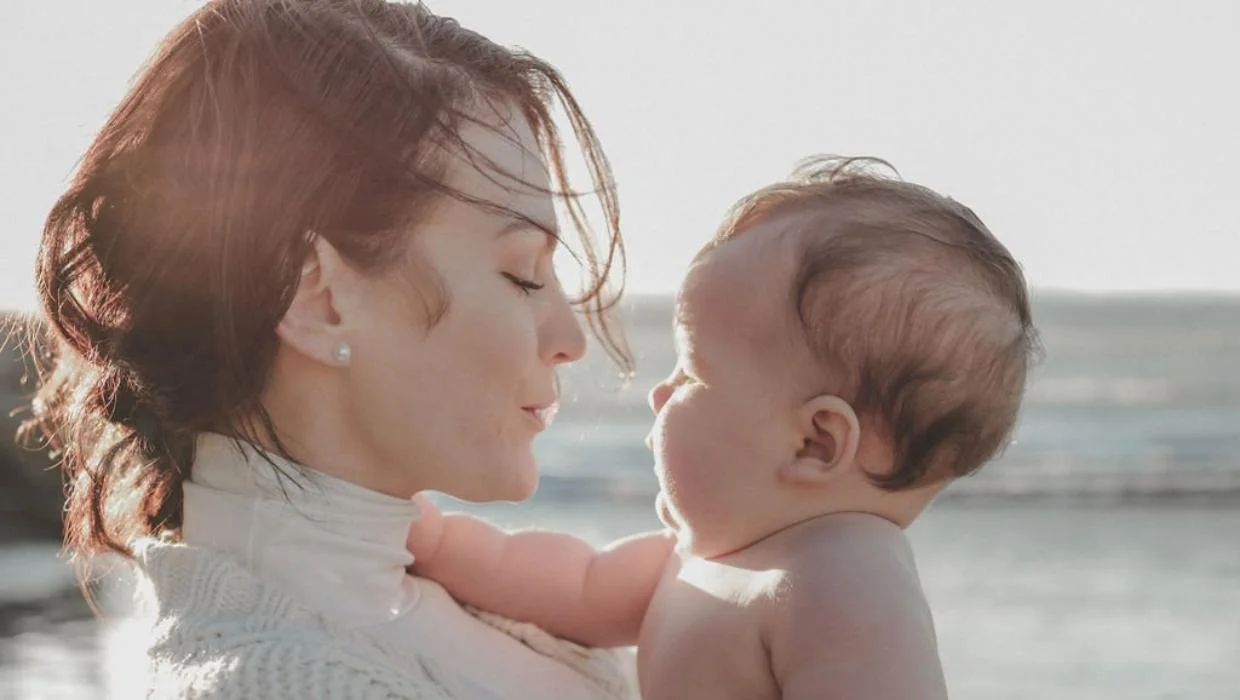Originally published on 26 September 2025 by Senior Writer, Nikki Macdonald, The Post.

Nationalising health services was supposed to end the postcode lottery of unfair care based on where you live. But three years on, new data shows surgery treatment thresholds still vary wildly. Nikki Macdonald investigates.
The pain is like being dragged from the inside out, Michaela Wyatt says.
“Like gravity at its worst, and it’s just trying to pull almost anything and everything out.”
Then there’s the bleeding – 2½ weeks of it a month.
The 31-year-old Hastings mum has struggled with endometriosis since she was 13. Nine miscarriages; three miracle children with their own health issues; every medical intervention imaginable.

Her last hope to stem the bleeding – and the hours stuck on the toilet, in bed, or crying on the floor – is a hysterectomy. But almost three years after being referred, in November 2022, she’s still waiting.
A June 2024 letter from Health NZ apologised for failing to meet the first assessment target time of four months, “due to the ongoing increased demands on the health system”.
Wyatt finally had a pre-assessment appointment last November. Then nothing.
“What are we waiting for?” she says. “These are serious issues, and it affects so many people in so many ways. I’m trying to deal with myself, but I’m dealing with my children, and I’m in constant pain, crying and I’m just left alone.”
It’s even harder to know that Hawke’s Bay has one of the higher gynaecology surgery qualifying scores in the country, at 60. Patients on the West Coast can get operations with a score of just 10.
“It hurts the heart,” Wyatt says. ”It’s just shit.“
One of the justifications for the 2022 health reforms combining 20 district health boards into Health NZ was to ensure every Kiwi got the same health deal.
“Access to the right care at the right time no matter where they live,” the messaging promised.
But three years on, gynaecology is one of many specialties that still have wildly different treatment thresholds for non-urgent surgery, depending where you live.
Southerners seem to get the worst deal.
Otago University gynaecology senior lecturer Helen Paterson set up a women’s health bus in 2015 to tour Southland and Otago, to help rural patients access treatment.
Now, she’s prescribing work-arounds for women who need a hysterectomy, with bleeding so heavy they often can’t work, who can’t even get on the waiting list. And the Southern region gynaecology surgery threshold is now the highest in the country at 75, having increased from 65 in 2022.
“I am just getting more and more of that – where people are just desperate,” Paterson says. “We thought when we got Health NZ, we were going to unify things. If anything, I think it’s got worse.”
What’s the score?
Developed in the 1990s, New Zealand’s Clinical Prioritisation Assessment Criteria (CPAC) were designed to help determine which patients to prioritise for treatment.
The system weighs patient factors like how much the condition impacts their life and job, and the surgeon’s assessment of symptoms, risk of complications, and the likelihood surgery will actually help.
The combined score of 0-100 helps decide whether a patient makes it onto the surgery waiting list. The treatment threshold is set at a score at which surgery can be done within four months.
The problem, says College of Surgeons NZ chair Ros Pochin, is that thresholds historically varied between districts, depending on demand and supply.
“That has the potential to lead to inequity, particularly for the rural communities, and the proverbial postcode lottery.
“In the region I’m in [Nelson] you can’t get your umbilical hernia done, when you definitely would get your umbilical hernia done if you were in Auckland. That’s not reasonable, or equitable.”
While she applauds Health NZ’s goal of equal care for all Kiwis, that’s a long way off, she says.
“I think that was a good principle. I don’t think it’s happening in reality.”
Former auditor-general John Ryan didn’t think so either.
“The way that treatment is provided is often not equitable, or timely,” he concluded in a June report that called on Health NZ to commit to a clear timeline to achieve nationally consistent treatment thresholds.
Mind the gap
All her life, Stacey Hill’s weight had yo-yoed. But after having her son four years ago, it really spiralled, peaking at 145kg. Her doctor was blunt.
“They pretty much told me, if I don’t do something about it, I will get diabetes. Or I possibly won’t make it to my expected lifespan. And I think that’s what scared me the most.
“Also with having my son, I knew I needed to be active with him, and I couldn’t carry on with binge eating and yo-yo dieting. So I really had to make a life choice.”
So the 40-year-old Christchurch mum asked to be referred for bariatric surgery.
That was around February 2024. She expected a date for an assessment around June, but nothing came. She couldn’t face another Christmas feeling listless and lazy, so in October, she decided “Kiwisaver could be my lifesaver”. She raided about $20,000 of her retirement savings to have the operation privately.
“If I had carried on still waiting in public, I don’t know if I’d still be here today.”
A year on, Hill now weighs 78kg. She goes for 6km Sunday walks, chases after her son and can venture outside “without feeling yuck”.
“It’s not about making the effort now, it’s because I love doing it … Physically, mentally, emotionally, I’m a lot better.”
While going private was “absolutely” worth it, Hill knows that’s not an option for many. And it’s hard to hear that she’d have had more chance of getting free surgery in public if she had a different address.
While the treatment threshold for bariatric surgery in Canterbury is 68, in Auckland the qualifying score is just 10.
“I’m disappointed with how public have treated me … But there’s worse people off than me that are still sitting there waiting.”
A June snapshot of treatment thresholds obtained under the Official Information Act showed bariatric surgery had the biggest range between regions.
General gynaecology, ear, nose and throat, plastics and orthopaedic surgery all had ranges of more than 60 points between the lowest and highest qualifying scores.
While winners and losers vary by specialty, Southern and Waikato patients had the highest average thresholds across all specialties.
And the numbers are not just academic, as Endometriosis New Zealand chief executive Tanya Cooke points out.

“The postcode lottery for endometriosis care means two people with the same symptoms can face vastly different journeys – one may receive timely surgery while the other can’t even get on a waitlist.”
But the different thresholds mean we don’t even know the size of the treatment gap, says Paterson. Because no-one tracks the patients who are declined surgery in one area but would qualify in another.
“The first thing you need to do is be honest, and try and work out ‘How much work is that?’”
Attempts to create a national qualifying score for cataract surgery give a sobering glimpse of the potential magnitude of what doctors call “unmet need“. Working to lower the threshold from 61 to 46 in the Southern region added 1800 patients to the waiting list.
Standardising thresholds
Paterson says while increasing funding for areas with higher qualifying scores is one option to even out treatment thresholds, opening up the system – so patients can choose to be treated in areas with more capacity – could also help.
Pochin agrees standardising treatment thresholds to find out how many people are currently missing out, is the first critical step. That also requires a universal IT system, which should have been “the first win” for a unified health system.
While New Zealand’s stretched geography means some patients will always face greater struggles to get healthcare, more “cold hard cash” to build and staff more operating theatres would reduce unfairness in access, she says.
“If that’s not a solution that’s coming forward, then we have to make sure that the way we cut the cake is more equitable … If one place is getting many more operations and the other place is getting almost none, you have to ration out the size of the pot of gold you’ve got.”
But Wellington ear, nose and throat specialist and Otolaryngology Society immediate past-president, Catherine Ferguson, says the threshold variation is more complex than just money.
In big centres doing the most difficult surgery, simpler operations such as tonsil removals can get pushed out.
In some places theatre space is the biggest limitation. In others, such as Wellington, surgery lists can be cancelled because the hospital is so overloaded there are no recovery beds. More money for surgery won’t fix that.
And while moving patients – or surgeons – around to even up access is theoretically possible, in reality districts still largely operate separately, Ferguson says.
“We are still – many years on from the health reforms – working in siloed districts.”
Health NZ director of national clinical networks, Mary Cleary-Lyons, acknowledges there’s still national variation in CPAC qualifying scores for elective surgery.
That’s partly because not all district health boards used the tool in the same way, she says.
“This means CPAC thresholds alone does not explain the variation in access – capacity, pathway flow and local practices play a larger role.”
Since decision-making was nationalised in 2024, Health NZ has been working to reduce disparities across the country, but that process can be complicated, Cleary-Lyons says.
Health NZ plans to review access thresholds and clinical prioritisation tools in this financial year.
“We are committed to reducing variation in access to elective treatment…We have made progress in some areas …This is not a process which can be achieved instantly.”
Out on a (dodgy) limb
The measure of Steve Loftus’ hobble depends on where he’s at in the painkiller cycle. An hour in and he can still manage his lawnmowing and gardening job. Just. But at the ragged end, the pain pierces sleep.
Loftus’s hip went in January. Osteoarthritis, they said. And then a month ago he got a 5.30am wake-up call, with excruciating pain in his knee.
“I couldn’t even stand straight up and down at the sink to wash dishes,” the Wairarapa 69-year-old says.
While he did get a physio course that helped, he’s still waiting for an assessment for a hip operation. Throw in the knee, and Wairarapa’s national-high orthopaedic surgery threshold, and the future does not look good for his gardening job.
“That gives me a lift. I enjoy doing the job. Now that I’m retired and hobbling around, there’s not much else I can do.
“It’s unfortunate that I’m going to have to either severely curtail it or give it up altogether, simply because of the way the health system is at the moment. We contributed through taxes to pay for all these things, and now it’s letting us down when we most need it.”
Loftus is frustrated to learn he has to meet a surgery threshold of 80, while someone in Tairāwhiti can theoretically get treated with a score of just 20.
“It seems unfair that there’s X amount of dollars and that it’s not spread more evenly. We’re obviously not getting our share of the pie.”
However, Taranaki surgeon and Orthopaedic Association immediate past-president, Simon Hadlow, is not convinced the treatment thresholds reflect the reality of patient access.
That’s because two things eroded surgeon buy-in to the scoring system, he says. The first was that it prioritised pain to the extent that less painful (but still significant) conditions could never make the waiting list.
And while the scores were originally meant to set an appropriate level of clinical need for treatment, district health boards began using them to control waiting lists, so they could hit their treatment target timeframes, Hadlow says.
“As the squeeze came on funding, the hospitals started using the threshold as a means of rationing.
“So they say, ‘Well, let’s put up the threshold’. So you’ve got osteoarthritis, but you don’t score badly enough to get on.
“But then there’s a whole lot of unmet need. So then clinicians start saying, ‘Well, this is not right. This is not fair. I’m just going to put a patient on [anyway]’.”
While Health NZ plans to standardise orthopaedic thresholds, it’s not clear how that would work, Hadlow says.
“It’s hard to see how a similar thing is not going to happen. Do you just put it up and have unmet need, or do you put them on the waiting list and they all wait two years? You can’t have it both ways at the moment.”
Eyes on cataract surgery
By the time Anne Walders got cataract surgery in her left eye, her world was so blurry she was afraid to drive, and her beloved vege garden was neglected for fear of tripping on some unseen hazard.
“You’re virtually nearly completely blind by the time you get enough points to access the surgery.”
When the 82-year-old finally got the op, it was life-changing.
“It’s amazing. You don’t realize how bad your eyes were until you get the vision back. The hardest thing to get used to is when you look at yourself in the mirror and you think ‘Oh, God, do I look like that?’”
So when her right eye started to go, and the hospital warned it could take up to five years to get surgery in the public system, Walders paid $4000 to get the op privately.
What she didn’t know at the time – two years ago – was that the Southern region had the highest treatment threshold, at 61 (too blind to drive). In other areas, patients with a score of 46 (mildly reduced vision) qualified.
Cataract surgery was the test case for national standardisation of access scores. In 2023, then health minister Ayesha Verrall promised all regions would adopt a threshold of 46.
Two years on, things have got fairer, with the central and northern regions having standardised their access scores. But Southern patients still need a score of 61, Canterbury has a threshold of 55, and patients in the North Island’s Lakes district need to score 54.
Otago University senior lecturer in ophthalmology, Francesc March de Ribot, says despite the Southern threshold remaining unchanged on paper, extra funding has improved access in the region. Patients should no longer wait till they’re too blind to drive to get surgery. But it’s still not a level playing field.
“Disparity in treatment thresholds of cataract surgery is a significant issue, and it is clearly related to allocation of resources …With more money comes more theatre space … If we have more resources, we can meet the demand of the population.
“There’s a lot of work to get done to make sure that the situation is sustainable. It’s not the end of the game.”
Otago University associate professor and Christchurch ophthalmologist, Mark Elder, says reducing Canterbury’s cataract threshold from 55 to 46 would add so many patients to the surgery list that “waiting times will blow out dramatically”. And it’s hard to attract more surgeons when senior doctors are striking over poor pay.
“The threshold is just a number and an aspirational goal. More important is real resource. And there is the disconnect; a manager’s number on a spreadsheet vs the actual workforce. You cannot just change a number with a keystroke and get more work done.“
About Endometriosis New Zealand
Endometriosis New Zealand is the national organisation for endometriosis – dedicated to providing support, advocacy, research, information, education, and awareness on endometriosis. We are committed to improving the lives of individuals impacted by this condition and helping them find a way forward with hope and strength.



